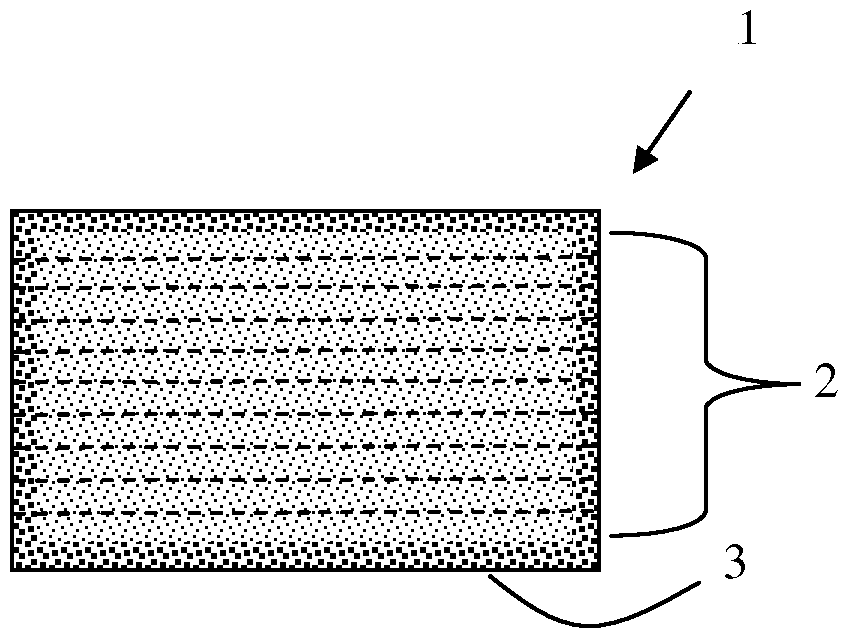Fast Dispersing Dosage Form Containing Levetiracetam
一种分散、快速的技术,应用在治疗对左乙拉西坦治疗上应答的疾病,病症或疾病状况,制备所述剂型领域,能够解决没有公开合适剂型、低脆性硬度等问题
- Summary
- Abstract
- Description
- Claims
- Application Information
AI Technical Summary
Problems solved by technology
Method used
Image
Examples
Embodiment 1
[0127] Embodiment 1 prepares the orodispersible dosage form of three-dimensional printing
[0128] The following method was used to prepare a three-dimensionally printed orodispersible dosage form comprising a matrix comprising LEVs. The composition and amounts used for the printing fluid and loose powder are as follows:
[0129]
[0130]
[0131] An incremental layer of loose powder of predetermined thickness is spread over the previous powder layer, and printing fluid is applied in droplets to bind the particles therein according to a predetermined saturation level, row spacing, and printing fluid flow rate. This two-step process was completed until a substrate containing the target amount of printed incremental layers was obtained.
[0132]Any three-dimensional printer device components known or described herein can be used, but these exemplary formulations can be prepared with a Coriolis Instrument (Dimatix / Spectra Technology Integration, model: CoriolisRP1). The p...
Embodiment 2
[0136] Example 2 Fast Dispersing Flakes with Altered Structure in Different Bulk Layers
[0137] Preparation of taste-masked three-dimensionally printed orodispersible dosage forms with altered structure in the bulking layer
[0138] According to the 3DP method described above, but it can be carried out in several different ways to prepare dosage forms of different structures varying in hardness and bulk layer composition. The following method provides a hardness of the upper and lower surfaces of the wafer that is greater than the hardness of the inner portion of the wafer. This strategy facilitates the generation of parts in flakes with different mechanical properties. This approach is used to design flakes where the composition of the top and bottom layers differs from that of the middle layer. This design results in flakes with stronger top and bottom layers, which increase hardness and reduce brittleness, and a large middle part with less hardness, which allows the flak...
Embodiment 3
[0149] The characterization of embodiment 3 dosage forms
[0150] The following method was used to characterize the 3D printed solid porous dispersion matrix.
[0151] brittleness
[0152] The resistance of the matrix to fracture was analyzed using the Tablet Friability Test (USP method ). The test used a VanKel brittleness tester (Model 45-2000, Varian, USA) equipped with a drum size of 285 mm in diameter and 39 mm in depth, rotated 100 times at 25 rpm. A minimum of 10 flakes are dropped per revolution through curved protrusions extending from the middle of the drum to the outer wall. Thus, at each inversion, the tablets are rolled or slid about 130 mm onto the drum or onto the tablets next to each other. All loose powder was removed from the tablet and the tablet was weighed before and after 100 cycles.
[0153] surface material
[0154] The matrix was inspected visually with or without a microscope. The surface texture is analyzed to determine whether it is rough ...
PUM
 Login to View More
Login to View More Abstract
Description
Claims
Application Information
 Login to View More
Login to View More - R&D
- Intellectual Property
- Life Sciences
- Materials
- Tech Scout
- Unparalleled Data Quality
- Higher Quality Content
- 60% Fewer Hallucinations
Browse by: Latest US Patents, China's latest patents, Technical Efficacy Thesaurus, Application Domain, Technology Topic, Popular Technical Reports.
© 2025 PatSnap. All rights reserved.Legal|Privacy policy|Modern Slavery Act Transparency Statement|Sitemap|About US| Contact US: help@patsnap.com



